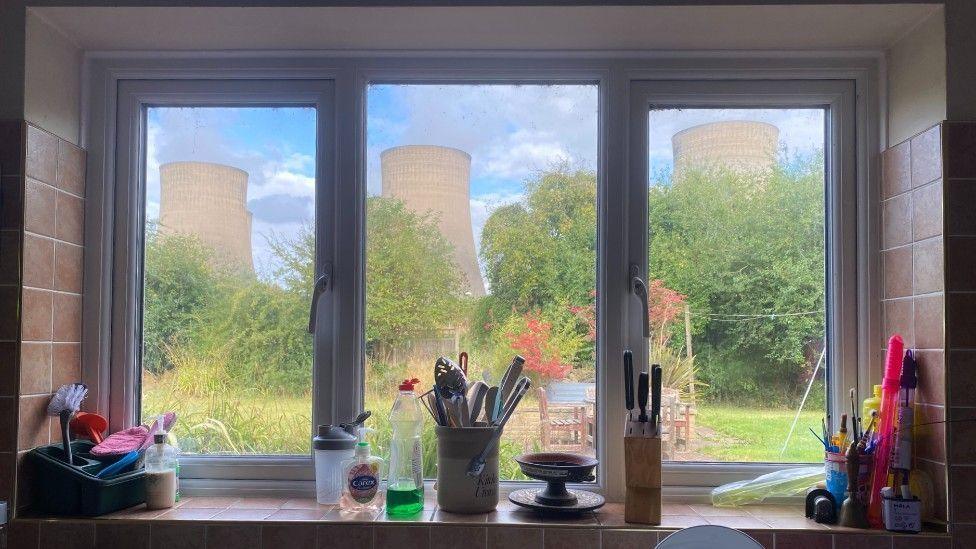'Fight not over' to save cooling towers
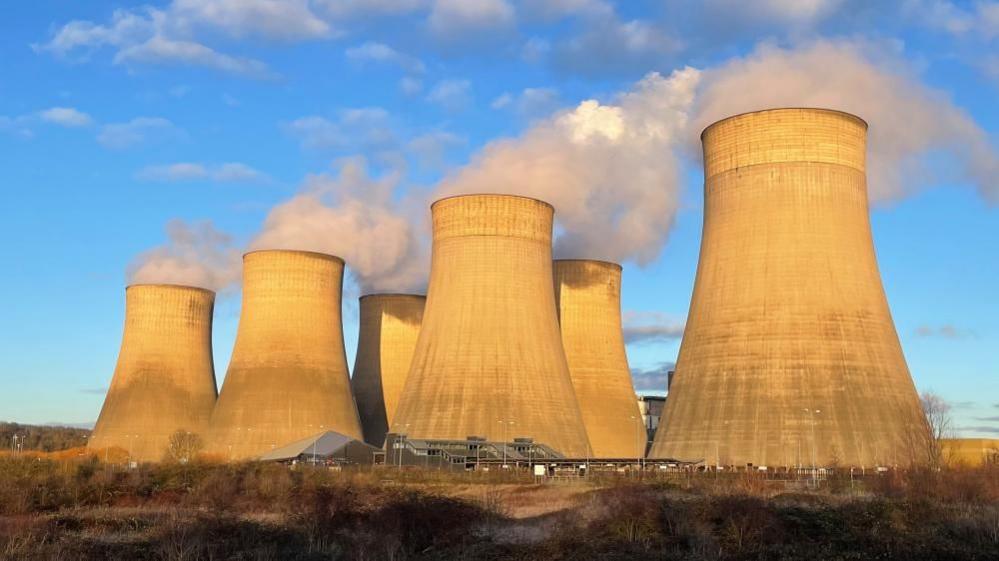
Site owner Uniper plans to transform Ratcliffe-on-Soar into a clean energy technology park
- Published
Campaigners say the "fight is not over" to save the cooling towers of a power station in Nottinghamshire after demolition plans were given the go-ahead earlier this month.
The Twentieth Century Society (TCS), which focuses on preserving architecture from 1914 onwards, has warned that based on existing plans nearly all cooling towers nationwide will be "extinct" by the end of the decade.
Under the plans approved by Rushcliffe Borough Council, the demolition of Ratcliffe-on-Soar power station's cooling towers is expected to take place between 2029 and 2030.
A listing application for Ratcliffe-on-Soar was also turned down by Historic England and the Department for Culture, Media and Sport.
A spokesperson for Historic England said despite "some architectural and historic interest" the site did not meet the criteria to be listed.
It has issued a "certificate of immunity" for Ratcliffe-on-Soar, which cannot be overturned, meaning the site cannot be listed or served with a building preservation notice for five years.
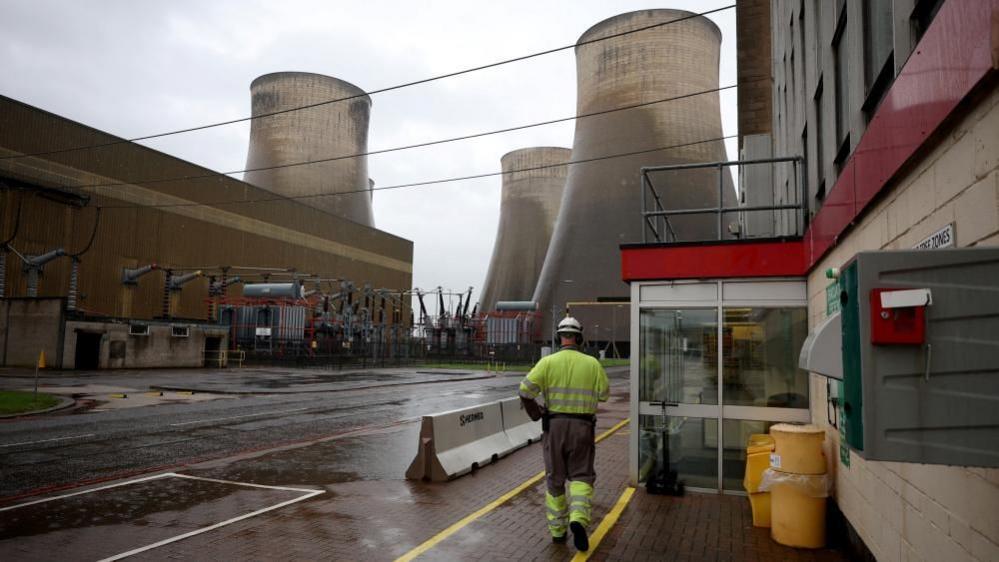
The decommissioning of Ratcliffe-on-Soar is expected to last until March 2026
Oli Marshall, the campaigns director at TCS, said the cooling towers represented "the Stonehenge of the 20th Century".
He questioned why other methods of power generation were able to be preserved but not coal-fired power stations.
"Long after the sails have stopped turning on windmills, and the furnaces have been extinguished, these structures have gradually assumed the status of national landmarks," he said.
"Cooling towers are really just the 20th Century version of this long tradition, but unless we step in to try and save some now they won't be around for much longer."
There are only 37 individual cooling towers left standing across the UK, including the eight at Ratcliffe-on-Soar, according to TCS, down from a peak of about 240 in the 1960s.
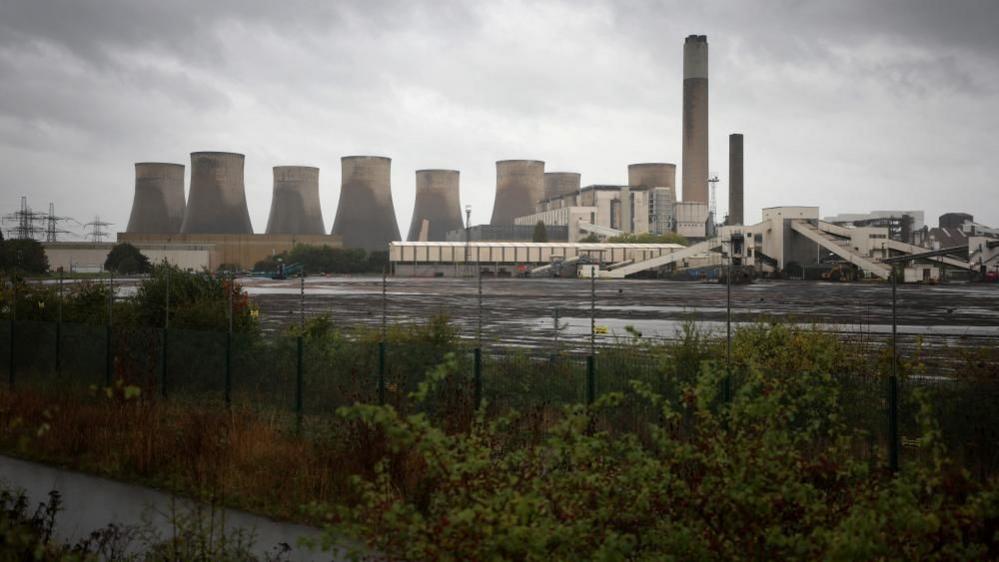
Ratcliffe-on-Soar had been generating electricity since 1968 before it closed
Mr Marshall said despite the failed listing bid and the demolition approval, the campaign to protect the cooling towers would continue.
"It wasn't that long ago we were fighting to preserve Art Deco buildings, it was only a decade or two ago that a lot of those were being demolished," he said.
"People's perceptions can change, governments can change, who knows what can change."
The site owner, Uniper, reaffirmed that the cooling towers were approaching the end of their design life, and it would not propose to retain any of them.
A spokesperson said: "Retention of any towers would come with a significant cost to maintain these structures and meet safety requirements.
"Retaining the cooling towers would directly impact any future development at the site and the benefits this would bring to the East Midlands."
Meanwhile, Historic England said it appreciated the "great affection" people had for Ratcliffe-on-Soar power station.
"Which is why we have implemented a detailed recording programme of post-war coal-fired power stations, working closely with the Science Museum Group to ensure important artefacts are saved," a spokesperson said.
Get in touch
Tell us which stories we should cover in Nottingham
Follow BBC Nottingham on Facebook, external, on X, external, or on Instagram, external. Send your story ideas to eastmidsnews@bbc.co.uk, external or via WhatsApp, external on 0808 100 2210.
Related topics
- Published3 October
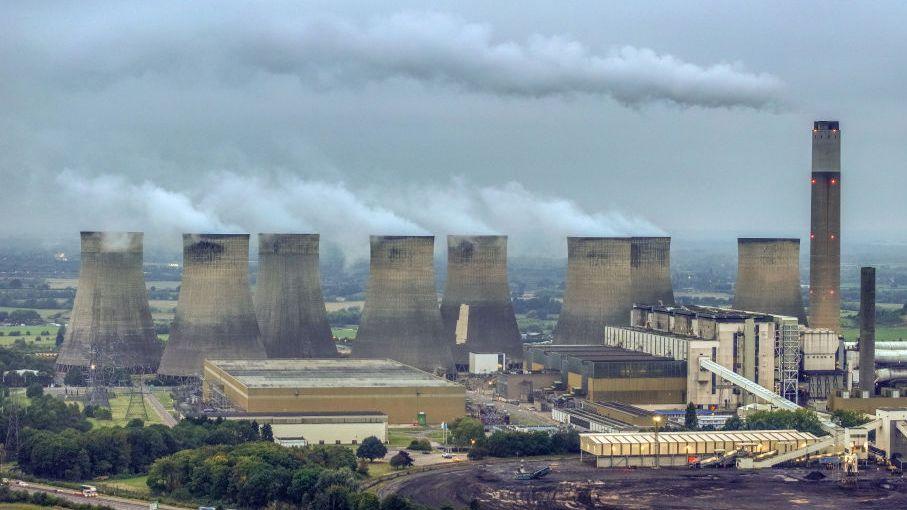
- Published24 August
